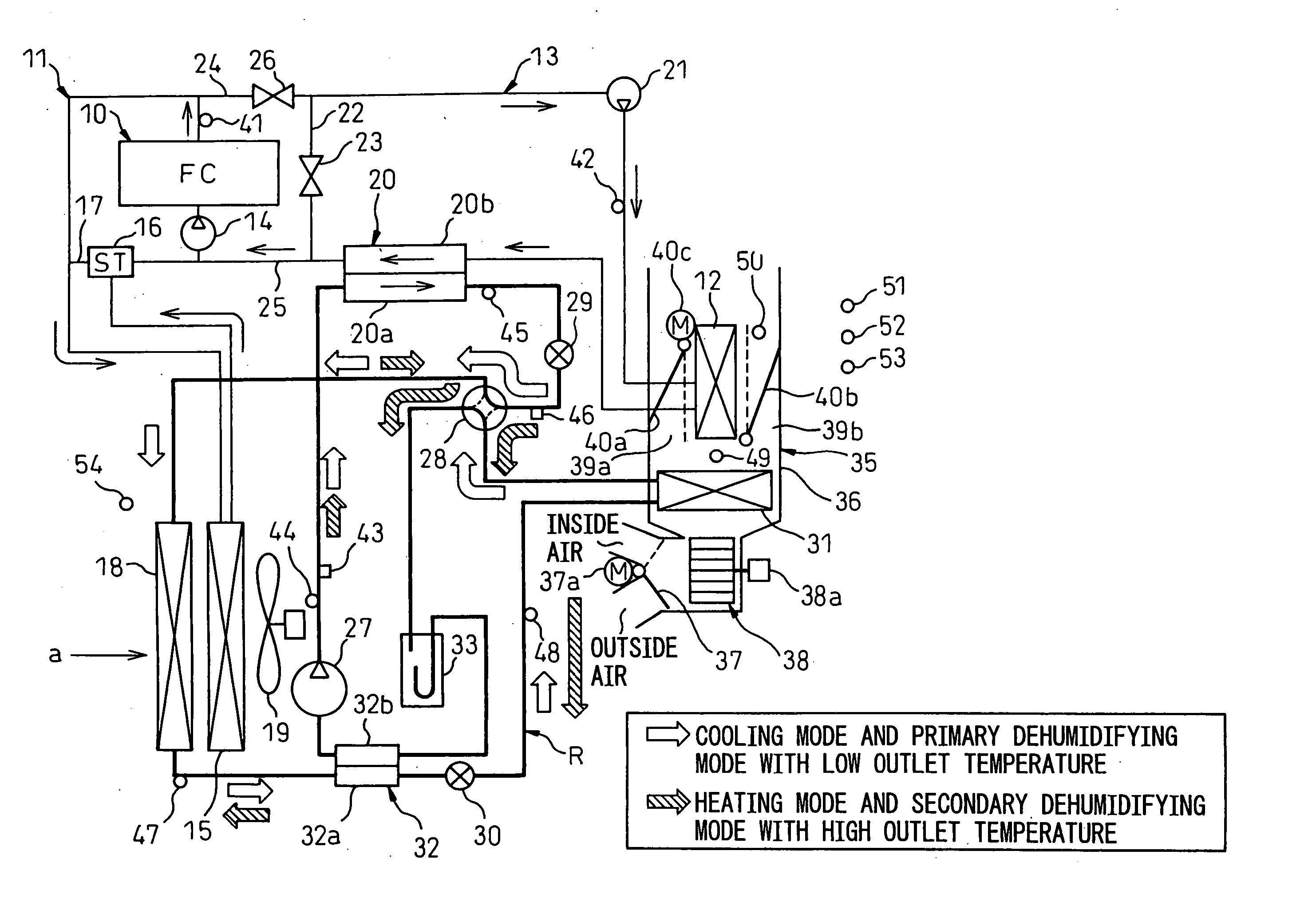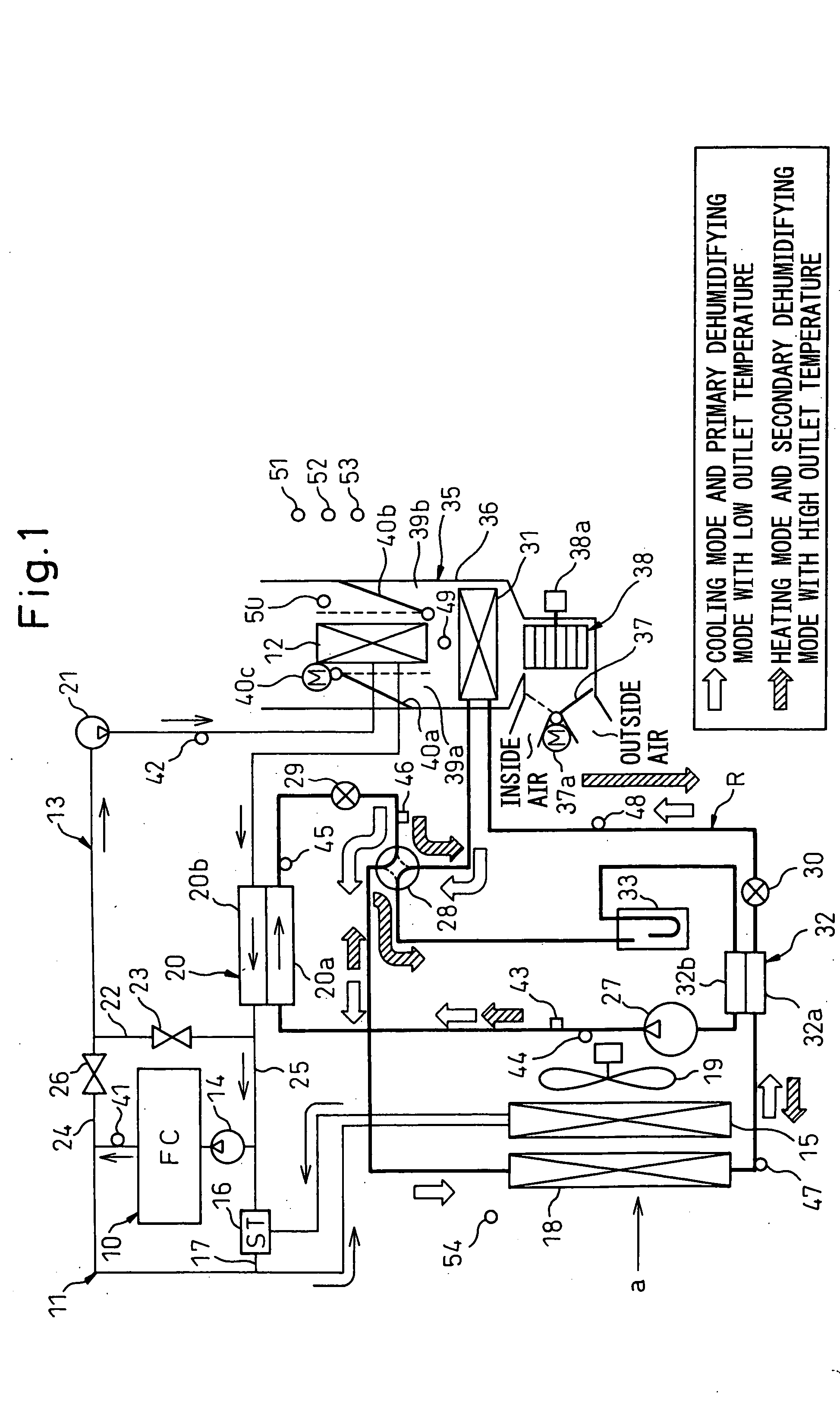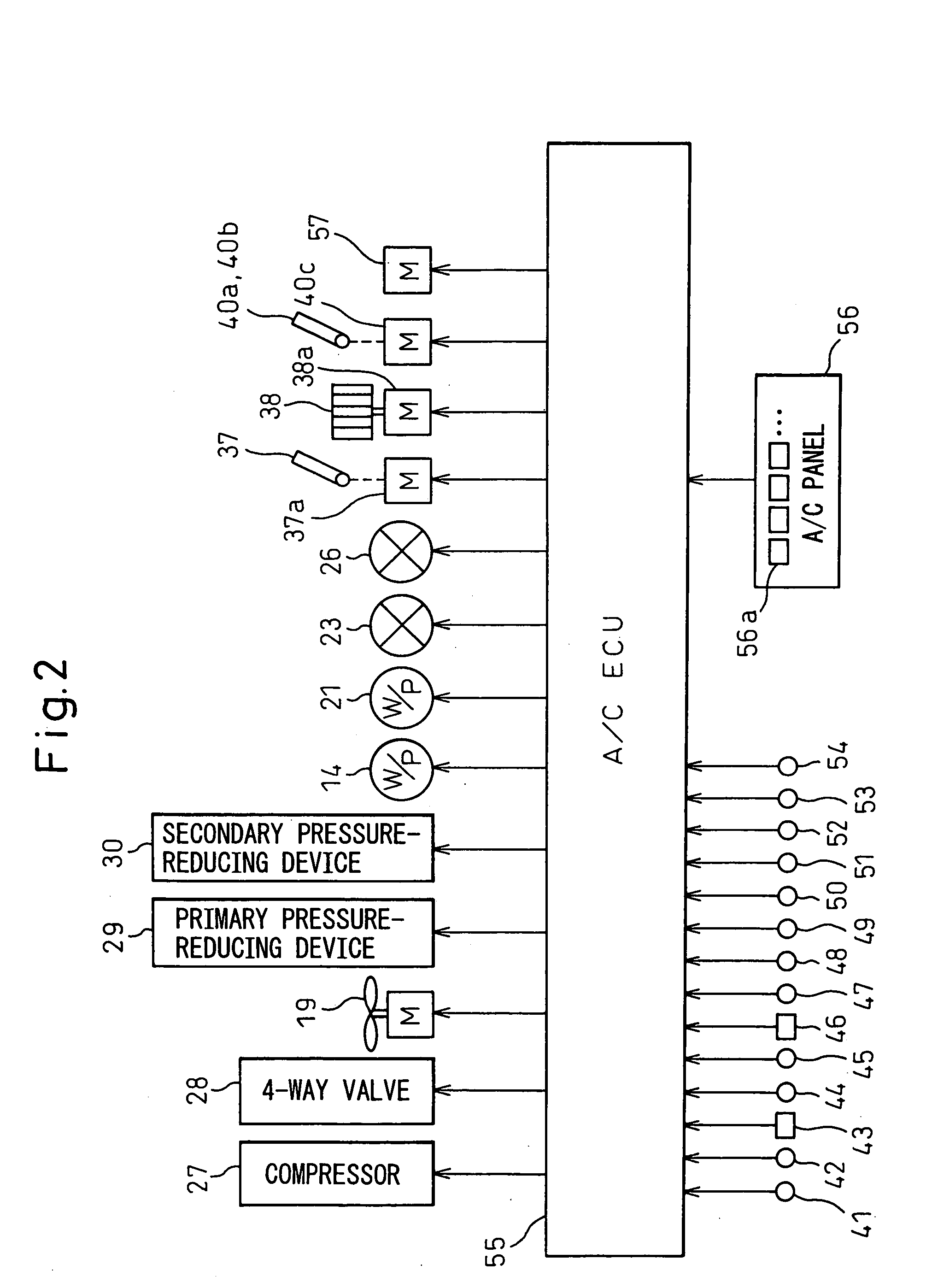Automotive air conditioning system
a technology for air conditioning systems and automobiles, applied in the direction of domestic cooling devices, lighting and heating devices, nuclear elements, etc., can solve the problem of insufficient heating effect of the interior of the passenger compartment, and achieve the effect of increasing the immediate effect of heating performan
- Summary
- Abstract
- Description
- Claims
- Application Information
AI Technical Summary
Benefits of technology
Problems solved by technology
Method used
Image
Examples
first embodiment
[0058]FIG. 1 is an overall system configuration diagram including a refrigeration cycle R, a hot water circuit and an inner air conditioning unit portion. In this embodiment, an example is illustrated in which an apparatus according to the invention is applied to a fuel cell installed vehicle having a fuel cell (FC stack). 10 which generates electric power that is supplied to an automotive driving motor (not shown).
[0059] As is generally known, the fuel cell 10 is such as to function to generate electric power through a chemical reaction between oxygen and hydrogen, and when the fuel cell 10 generates electric power, heat is generated together with electric energy. In order to generate electric power efficiently using the fuel cell 10, the fuel cell 10 needs to be cooled so as to be maintained in an appropriate temperature range (for example, on the order of 60 to 80°). To make this happen, in this embodiment, the fuel cell 10 is provided along a hot water (coolant) circuit through...
second embodiment
[0143] While, in the first embodiment, the example of controlling the hot water circuit has been described with an emphasis being put on the importance of the increase in immediate effectiveness in heating in the initial stage of starting up the fuel cell 10, in a second embodiment, warming up of the fuel cell 10 when the temperature is low is attempted to be promoted.
[0144]FIG. 5 shows a flowchart illustrating an example of controlling the hot water circuit according to the second embodiment, and a determination step is added to that shown in FIG. 4 in which the coolant temperature TW1 on the fuel cell 10 side (the temperature detected by the sensor 41) is determined in step S360. In this determination step S360, whether or not the coolant temperature TW1 on the fuel cell 10 side is equal to or lower than a predetermined low temperature b (for example, 0° C.) which requires warming up to be promoted is determined. Then, if the coolant temperature TW1 on the fuel cell 10 side is eq...
third embodiment
[0147] While, in the first embodiment, the coolant-refrigerant heat exchanger 20 in the refrigeration cycle R is connected to the downstream side of the hot water type heater core 12 in the secondary hot water circuit 13, in a third embodiment, as shown in FIG. 6, the coolant-refrigerant heat exchanger 20 in the refrigeration cycle R is connected to the upstream side of the hot water type heater core 12 in the secondary hot water circuit 13.
[0148] By adopting this construction, in the third embodiment, hot water heated by the coolant-refrigerant heat exchanger 20 is allowed to flow into the hot water type heater core 12 immediately. Due to this, the heat of high temperature hot water that has been heated in the coolant-refrigerant heat exchanger 20 can be used effectively to heat the interior of the passenger compartment without being dissipated at other locations in a wasteful fashion. As a result, the rise in the heating of the passenger compartment can be promoted further. Note ...
PUM
 Login to View More
Login to View More Abstract
Description
Claims
Application Information
 Login to View More
Login to View More - R&D
- Intellectual Property
- Life Sciences
- Materials
- Tech Scout
- Unparalleled Data Quality
- Higher Quality Content
- 60% Fewer Hallucinations
Browse by: Latest US Patents, China's latest patents, Technical Efficacy Thesaurus, Application Domain, Technology Topic, Popular Technical Reports.
© 2025 PatSnap. All rights reserved.Legal|Privacy policy|Modern Slavery Act Transparency Statement|Sitemap|About US| Contact US: help@patsnap.com



